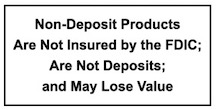Partners Bank of Wisconsin History
Heritage Bank – Headquartered in Spencer, Wisconsin, the bank was originally capitalized in 1908 as Spencer State Bank with $10,000 by 39 individuals. The bank opened in August of that same year. The bank was one of the few that did not close for a bank holiday during the Depression. By the end of its first 50 years in 1958 the bank had total assets of $2 million.
35 years later in 1994, the bank had $33 million in assets and capital of $3.1 million. Recognizing the need to grow and based on the close proximity to Marshfield, the bank opened a branch on North Central Ave. As the number of customers in Marshfield and the surrounding area grew, there was a need for additional space and in 2002 renovations were completed to expand the Marshfield facility. Also because their market territory had grown, the bank was renamed Heritage Bank. During 2006, a remodeling project took place at the main office in Spencer to update that location.
In 2008, Heritage Bank celebrated 100 years in the business and had grown to $71 million in assets and capital of $8.3 million. In 2011 the bank held over $100 million in assets and there was again the need to expand to keep up with the growth the bank was experiencing. The Marshfield location was updated to add better efficiencies and more office space in 2014. At the end of 2016 the bank had grown to $107 million in assets and capital of $12.8 million.
Stratford State Bank – In 1908, a group headed by Robert Connor, H. L. Klemme, W. F. Goetz, Jacob Wachtl, and Christ Franzen filed a Certificate of Incorporation with the State Banking Commission to create a business known as the Stratford State Bank. The first day of operation was November 2, 1908. The first meetings of the group were held in the town hall and the Connor Company office. The above five individuals formed the original Board of Directors with Robert Connor elected President and Walter Oby hired as Cashier.
In June of 1909, a site was purchased for a permanent bank building which served as the bank’s home for over 60 years and now houses the government of the Village of Stratford. The bank then moved into its present building in 1973. By the end of 1973, the bank’s assets were $10.3 million.
In 2008, Stratford State Bank celebrated 100 years in business and had grown to $110.8 million in assets and capital of $13.2 million. In November of 2016, the bank began an extensive remodeling project with a finish date of February 14, 2017. This gave the bank a fresh, updated look with the goal of providing more privacy for customers. By the end of 2016, Stratford State Bank had grown to $112 million in assets and capital of $14.5 million.
Partners Bank of Wisconsin – In the fall of 2016 Heritage Bank and Stratford State Bank announced a merger of equals agreement to form Partners Bank of Wisconsin as follows.
The Board of Directors of Heritage Bank, with locations in Marshfield and Spencer, WI, and Stratford State Bank, located in Stratford, WI, have entered into a merger agreement, subject to approval by their shareholders and regulators. Stratford State Bank President Jeff Lappe stated “This merger of equals within the same market area increases our assets to $210 million and provides the two organizations an opportunity to strengthen their position as a leading community bank in the Central Wisconsin area.”
The Boards of Directors felt it was important they continue to have the same customer-friendly philosophy the individual banks have always had and with that in mind, no personnel changes are being contemplated other than some shifts in roles and responsibilities. Heritage Bank President Marty Reinhart commented, “We both offer the same community focus with local decision making; and by combining our resources, we can expand our capabilities now, and into the future.”
Both banks are over 100 years old, having been chartered in 1908. By moving forward on a combined basis, they will be better able to continue their mission of serving the financial needs of their customers and communities through quality services and products while operating as a financially-strong independent community bank.




